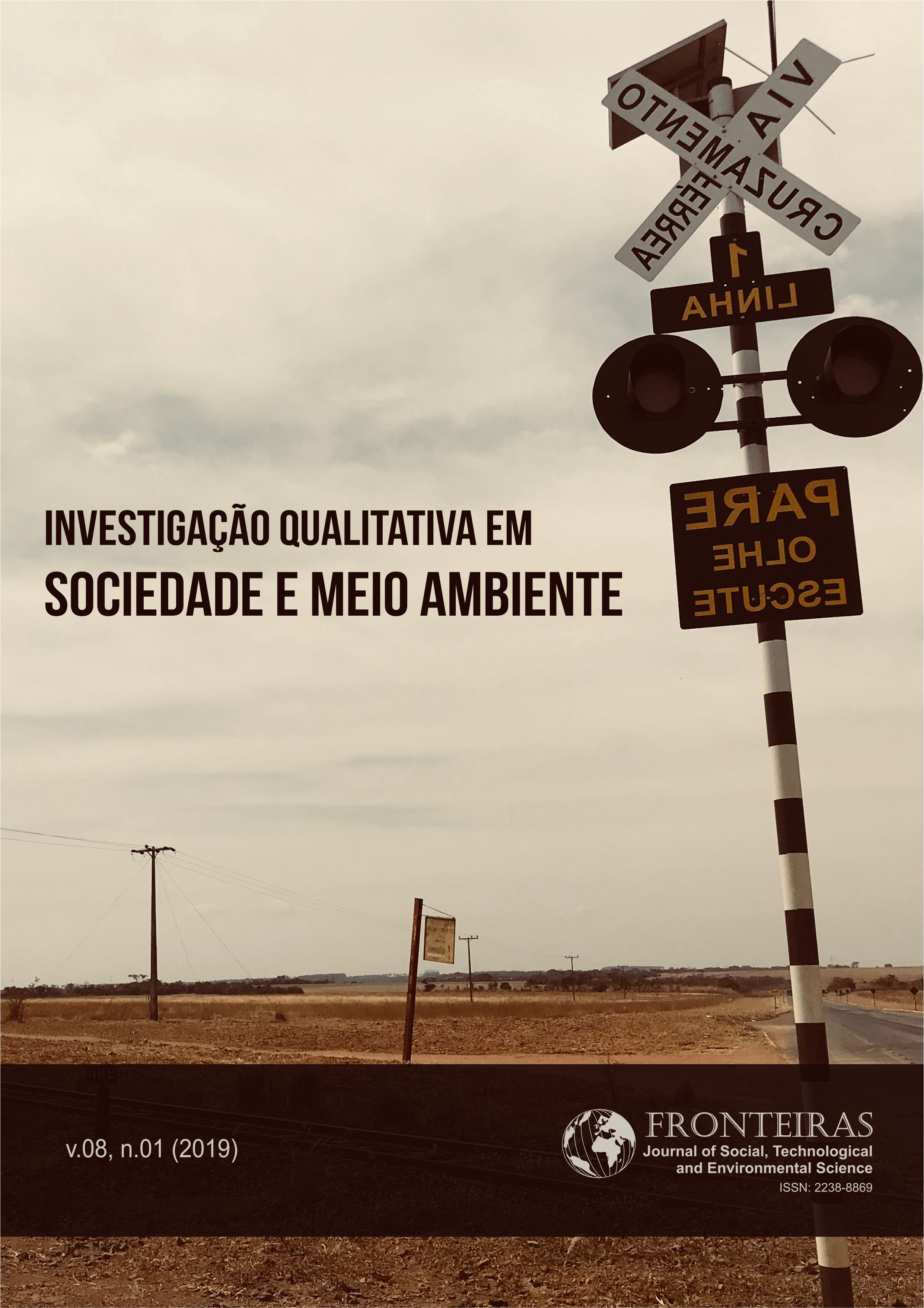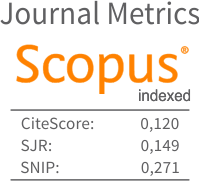Indicador Sintético de Prácticas Ambientales de los Hogares: Caso de Estudio Cantón Loja, Ecuador
DOI:
https://doi.org/10.21664/2238-8869.2019v8i1.p282-300Palavras-chave:
Indicador Sintético de Medio Ambiente, Indicadores, Prácticas Ambientales, DimensionesResumo
Resumen
El objetivo de esta investigación es calcular un Indicador Sintético de Medio Ambiente (ISMA), que refleje el comportamiento ambiental de los hogares del cantón Loja en el año 2014. La metodología utilizada se divide en tres etapas, en la primera se normalizó las seis dimensiones de prácticas ambientales (ahorro de agua, ahorro de energía, eliminación de residuos habituales y ocasionales, transporte y movilidad y actitud medioambiental), en la segunda se ponderó las dimensiones a través del método Delphi y finalmente se realizó el cálculo del indicador de cada una de las dimensiones y el ISMA. Los resultados obtenidos permiten concluir que las prácticas ambientales que realizan los hogares lojanos son adecuadas y óptimas para el medio ambiente, el mismo que se refleja por un ISMA de nivel medio. Las dimensiones que tienen mayor aporte son el ahorro de agua, energía, eliminación de residuos habituales y actitud medioambiental, a diferencia de la eliminación de residuos ocasionales y transporte y movilidad, los cuales presentan valores no aceptables.
Referências
Artaraz, M. (2003). Hacia una economía sostenible: interpretaciones, teorías e indicadores de desarrollo sostenible. Recuperado de https://addi.ehu.es/bitstream/10810/9010/1/Hacia%20una%20econom%C3%ADa%20sostenible%20CIUDAD%20Y%20TERRITORIO.pdf
Castro, J. (2002). Indicadores de desarrollo sostenible urbano. Una aplicación para Andalucía. Instituto de estadísticas de Andalucía.
Escobar, L. (2006). Indicadores sintéticos de calidad ambiental: un modelo general para grandes zonas urbanas. EURE (Santiago), 32(96), 73-98.
Espada, L. (2013). Hábitos de consumo. Perspectiva comparada y estudio específico en el municipio de Vigo. Recuperado de http://hoxe.vigo.org/pdf/valedorcidadan/Habitosvaledorc.pdf
Fielding, K. et al. (2010) Environmental sustainability: understanding the attitudes and behaviour of Australian households AHURI Final Report No. 152. Melbourne: Australian Housing and Urban Research Institute.
Gatersleben, B., Steg, L., y Vlek, C. (2002). Measurement and determinants of environmentally significant consumer behavior. Environment and behavior, 34(3), 335-362.
Labandeira, X., León, C., y Vázquez, M. (2007). Economía ambiental. Madrid: Pearson Educación S.A.
Londoño, C. (2006). Los recursos naturales y el medio ambiente en la economía de mercado. Guillermo de Ockham: Revista Científica. Vol. 4, No. 1. ISSN: 1794-192X
Meadows, D. (1972). Los límites del crecimiento: informe al Club de Roma sobre el predicamento de la Humanidad. México: Fondo de Cultura Económica.
Ministerio de Agricultura, Alimentación y Medio Ambiente. (2015). Información Ambiental - Indicadores Ambientales. Recuperado de http://www.magrama.gob.es/es/calidad-y-evaluacion-ambiental/temas/informacion-ambiental-indicadores-ambientales/
Ministerio de Vivienda Ordenamiento Territorial y Medio Ambiente. (2015). Indicadores ambientales. Recuperado de http://www.mvotma.gub.uy/indicadores-ambientales.html
Ministerio del ambiente, Gobierno de Chile. (2013). Comportamiento ambiental de la ciudadanía. Informe final.
Novo, M. (2009). La educación ambiental, una genuina educación para el desarrollo sostenible. Revista de Educación, (1), 195-217.
OCDE. (2008). Household Behaviour and the Environment Reviewing the Evidence. Recuperado de http://www.oecd.org/environment/consumption-innovation/42183878.pdf
OCDE. (2013), Greening Household Behaviour: Overview from the 2011 Survey, OECD Studies on Environmental Policy and Household Behaviour, OECD Publishing. http://dx.doi.org/10.1787/9789264181373-en
Sevillano, V., y Aragonés, J. (2009). Social perception of the behaviour of Spaniards on environmental issues. Revista Española de Investigaciones Sociológicas (Reis), (126), 127-149.
Statics Canada. (2013). Households and the Environment. Recuperado de http://www.statcan.gc.ca/pub/11-526-x/2013001/beforetoc-avanttdm1-eng.htm
Statics Canada. (2013). Households and the Environment: Energy Use. Recuperado de http://www.statcan.gc.ca/pub/11-526-s/11-526-s2013002-eng.htm
Downloads
Publicado
Como Citar
Edição
Seção
Licença
Esta revista oferece acesso livre imediato ao seu conteúdo, seguindo o princípio de que disponibilizar gratuitamente o conhecimento científico ao público proporciona maior democratização mundial do conhecimento.
A partir da publicação realizada na revista os autores possuem copyright e direitos de publicação de seus artigos sem restrições.
A Revista Fronteiras: Journal of Social, Technological and Environmental Science segue os preceitos legais da licença Creative Commons - Atribuição-NãoComercial 4.0 Internacional.


